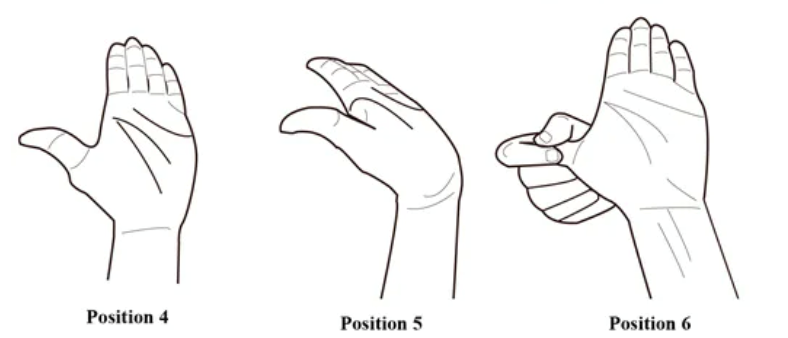
6 exercises to help manage carpal tunnel syndrome
Note: You may continue to feel some numbness and tingling with these exercises. If you find numbness, tingling, and/or pain are worsening with performing these exercises, stop and consult your physical therapist for advice on how to proceed.
Carpal Tunnel Syndrome (CTS) is one of the most common nerve compression conditions affecting 3-6% of the general population. It involves temporary increased pressure on the median nerve as it passes through a small tunnel in the wrist known as the carpal tunnel. This temporary compression can be caused by swelling in the tendons surrounding the median nerve and contributes to irritation and reduced mobility of the nerve.
Individuals with CTS often report numbness, and sometimes tingling and burning into the thumb, pointer, and middle fingers that is especially worse at night. Over time, weakness of the hand and difficulty holding objects and using tools/utensils can also occur.
Although CTS mostly affects females over the age of 50, individuals who are pregnant, have diabetes, obesity, arthritis, or whose work involves repetitive wrist movements (e.g. typists, cleaners and nurses) are at increased risk of developing CTS.
In some cases, individuals with CTS can have weakness and additional changes in sensation in the shoulder, neck and elbow. Stretches and exercises for the wrist, shoulder and neck can help the nerve and hand to move better while addressing posture and weakness in other areas of the arm that may be contributing to CTS symptoms.
Exercises for carpal tunnel syndrome management
Prayer stretch
Bring your arms up to shoulder height and bring your hands together in midline. Bring your wrists apart while keeping your fingers together. You should feel a stretch in the bottom of your wrist and forearm. As the stretch becomes tolerable, lift your elbows higher while keeping your fingers together. Start by holding the stretch for 30 seconds; gradually increase to 1 minute, as you feel more comfortable. Complete 2-3 repetitions.

Wrist extensor stretch
Bring your arms up to shoulder height. Bend your right wrist down towards the ground and move your hand towards the right. Use your left hand to hold the position. You should a feel a stretch through the outside of the forearm and top of the wrist. Hold this stretch for 30 seconds to 1 minute, and complete 2-3 repetitions. Repeat the stretch with your left arm this time moving your wrist to the left.

Nerve glides
With CTS, tension in surrounding muscles can limit the median nerve’s ability to glide freely as it is supposed to. Nerve glide activities involve a series of gentle movements to help restore the mobility of the nerve and can help provide relief for symptoms of CTS. Gently move through these 6 positions to help mobilize your median nerve. Make a fist with your thumb outside of the fist. Then open your hand until your fingers are straight keeping your thumb close to the rest of your hand.
While keeping your hand open, bend your wrist back slightly. Now bring your thumb out away from your hand. Keeping your fingers in the same position turn your palm up facing you. If these previous positions are tolerable, apply gentle pressure to stretch the thumb away from your hand. Hold each position for 3-5 seconds.


Image taken from Sensory nerve conduction velocity predicts improvement of hand function with nerve gliding exercise following carpal tunnel release surgery. Journal of Clinical Medicine, 10(18), 4121.
Ball squeezes
CTS can affect your grip strength making it difficult to maintain a strong grip with daily activities like cooking, gardening and working. Ball squeezes not only help strengthen your grip, but your wrist and forearm as well. Using a squeeze or stress ball, make a fist around the ball and squeeze for five seconds. Repeat 10 times. Squeezes should not be painful, if so, reduce the strength of your squeeze.

Chin tucks and scapular squeezes
Postural changes can also contribute to nerve irritation and increased tightness in muscles surrounding the nerve. Adding postural exercises for the neck and shoulder to your routine can actually help with symptoms you are experiencing in your hand and wrist.
While in a sitting position or lying down on your back, slowly tuck your chin in, making a double chin. Hold for 3-5 seconds then return to the starting position. Repeat this exercise 10 times. This exercise targets the deeper muscles of the neck. You can place your hand on the middle edge of the collarbone to ensure muscles in this area are not overly activated.
Scapular squeezes can be performed in standing or sitting depending on your comfort level. Keeping your shoulders down, squeeze your shoulder blades together and hold for 5 seconds. Repeat this movement 10 times.


Temporarily reducing participation in aggravating activities or heavy work involving your hands can also be helpful in managing symptoms.
CTS can make participating in your daily activities difficult and frustrating. Active management using exercise has shown to be an effective way to manage symptoms of CTS and improve function so you can get back to doing the activities you love.
For more information or if you’d like to schedule an appointment with a physiotherapist, check out our locations page to find a clinic near you or book online.
This blog was written by Jessica Otoo-Appiah, a physiotherapy student at the University of Toronto.




